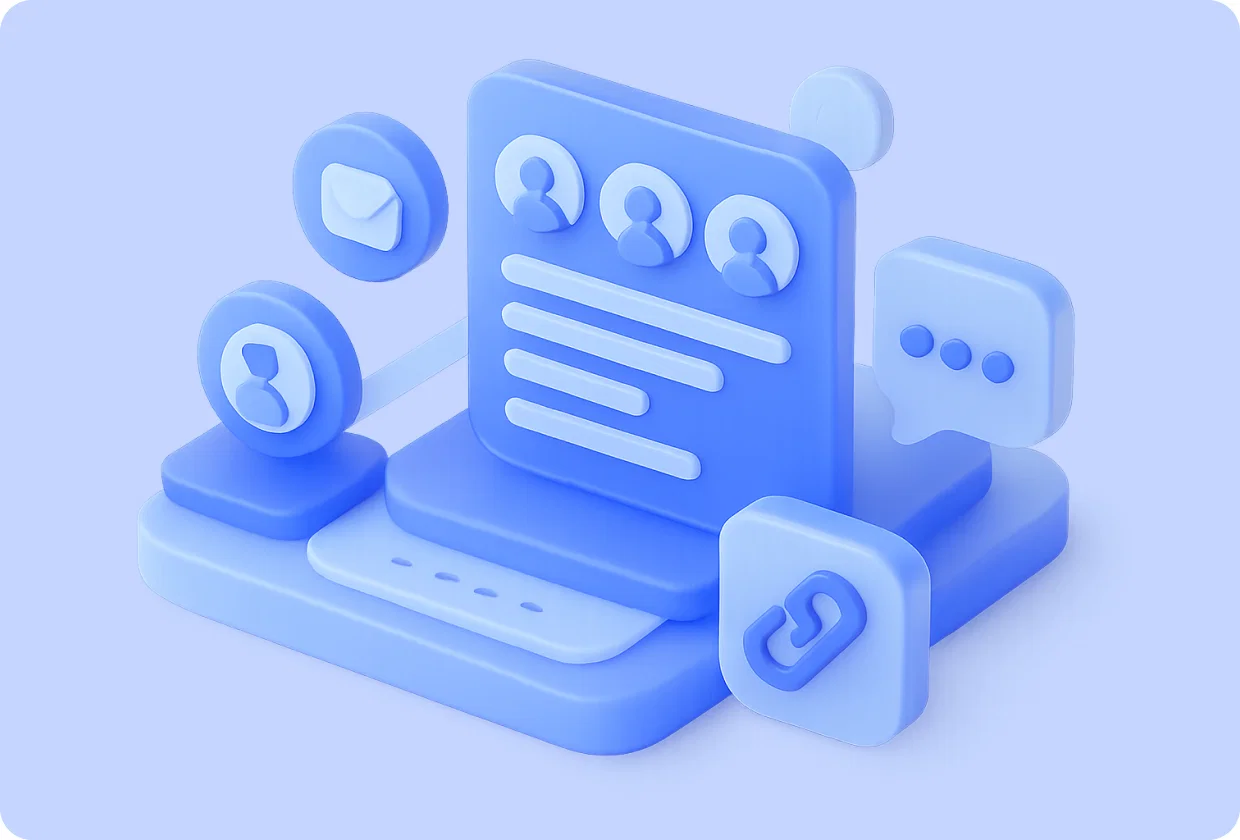Planning community features for your app requires a balance between user experience, technical feasibility, and business outcomes. Whether you’re building a social layer for a mobile app or adding community engagement to an existing product, the process starts with understanding what your users value and how they want to connect.
This guide explains how to plan community features effectively, including frameworks for goal alignment, user segmentation, feature selection, and measurement.
Step 1: Define the purpose of your community
Before deciding which features to build, clarify why your app needs a community layer.
Common goals include:
- User retention: Encourage ongoing participation and habit formation.
- Product feedback: Gather real user insights for continuous improvement.
- Social proof: Showcase active engagement to attract new users.
- Monetization: Enable creator economies or premium social experiences.
Example: A fitness app might use challenges and shared progress feeds to increase retention, while a learning app could prioritize discussion threads for peer feedback.
Step 2: Identify your user segments
Different user types engage differently within a community. Segmenting users helps define feature priorities.
| User Segment |
Motivation |
Example Features |
Design Action |
| Creators |
Want visibility, share expertise |
Profile badges, post creation tools |
Prioritize publishing workflows |
| Observers |
Consume content passively |
Feeds, reactions, saved posts |
Optimize discovery and content variety |
| Contributors |
Engage through replies and discussions |
Comments, Q&A, polls |
Enable quick, frictionless interaction |
| Moderators |
Maintain quality and safety |
Reporting tools, role permissions |
Build moderation dashboard |
Step 3: Choose core community features
When planning, start with high-impact features that match your goals and resources.
| Feature Type |
Purpose |
Why It Matters |
Implementation Consideration |
| Activity Feed |
Displays updates and posts |
Central hub for engagement |
Define ranking and privacy logic |
| User Profiles |
Show identity and credibility |
Builds trust and personalization |
Enable profile linking and badges |
| Groups or Topics |
Segment discussions by interest |
Encourages focused participation |
Add creation limits and moderation |
| Notifications |
Keeps users informed |
Increases return frequency |
Balance between real-time and digest alerts |
| Messaging |
Enables 1:1 or small-group chat |
Strengthens connections |
Add safety filters and block options |
Pro Tip: SDKs like social.plus provide ready-to-integrate APIs for feeds, chat, and profiles;allowing teams to focus on user experience instead of infrastructure.
Step 4: Map the User Journey
Plan where and how users encounter community touchpoints.
- Onboarding: Introduce community benefits early.
- Engagement phase: Use notifications and content discovery to keep participation active.
- Retention loop: Highlight user achievements and connections to reinforce return behavior.
A clear journey ensures your community layer feels integral to the product rather than a separate feature.
Step 5: Establish Metrics and Governance
Community success is measurable. Define metrics early to track performance.
| Metric |
Measurement Range |
Why It Matters |
What to Do |
| Engagement Rate |
20–50% weekly active users |
Reflects community vitality |
Adjust content prompts or incentives |
| Post-to-Comment Ratio |
1:3 ideal ratio |
Indicates healthy participation balance |
Encourage responses through badges |
| Retention Rate |
30–60% after 90 days |
Shows long-term value of community |
Re-engage lapsed users with notifications |
| Moderation Response Time |
<12 hours |
Maintains safety and trust |
Expand moderator tools or staffing |
Step 6: Scale and Iterate
Once your initial community features are live:
- Collect feedback from active members.
- Monitor which features drive engagement.
- Expand gradually (e.g., add groups, live events, or rewards).
Iterative scaling ensures sustainable growth rather than feature overload.
FAQs
How do I decide which community features to build first?
Start with features that directly support your main engagement goal (e.g., feeds for activity, comments for interaction). Use user feedback and analytics to guide future additions.
What's the best way to moderate user-generated content?
Combine automated moderation (keyword filters, report tools) with human review. Platforms like social.plus offer moderation APIs and dashboards for safe, scalable management.
How can I measure the ROI of community features?
Track metrics such as retention uplift, session frequency, and lifetime value. Apps that add social features can see up to 3× higher retention.
Should I build or buy community infrastructure?
If time-to-market and reliability matter, consider SDKs like social.plus that offer pre-built social features and analytics. Building from scratch is best only for unique, proprietary use cases.
Conclusion
Effective community planning starts with purpose, user understanding, and strategic measurement. By designing features that connect people around shared interests and embedding engagement loops throughout the user journey, apps can transform passive users into active communities.
Platforms like social.plus make it easier to implement scalable, secure, and data-driven community features—accelerating your path from concept to a thriving in-app ecosystem.
